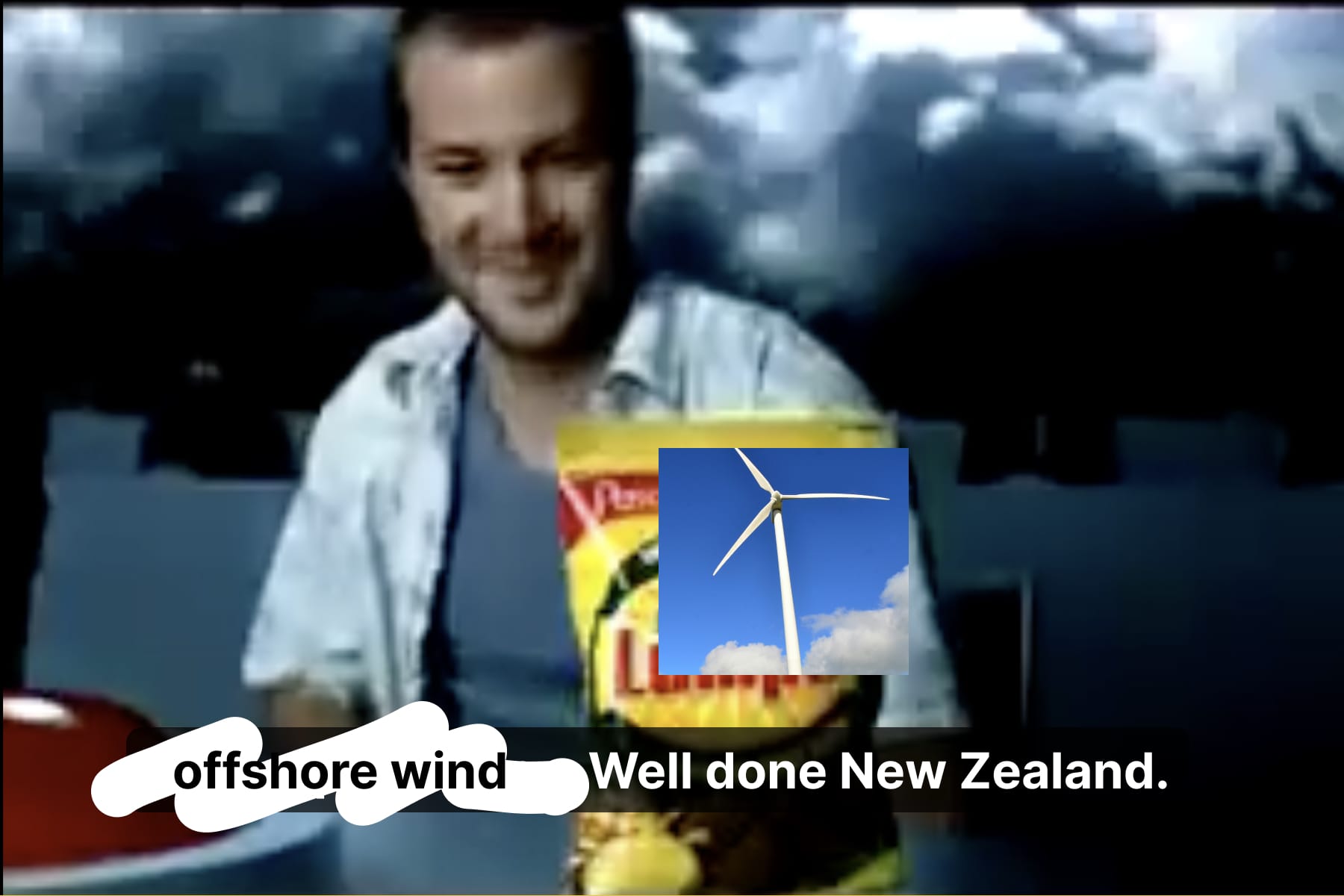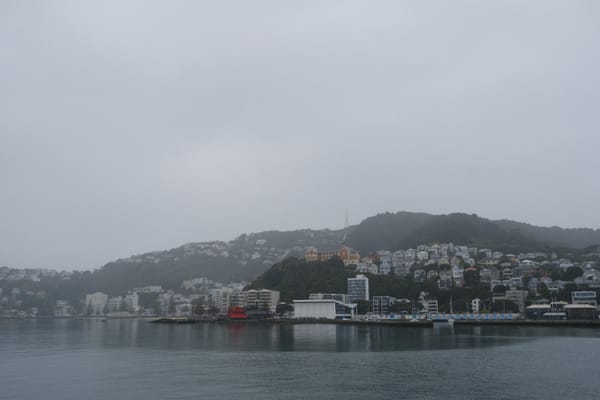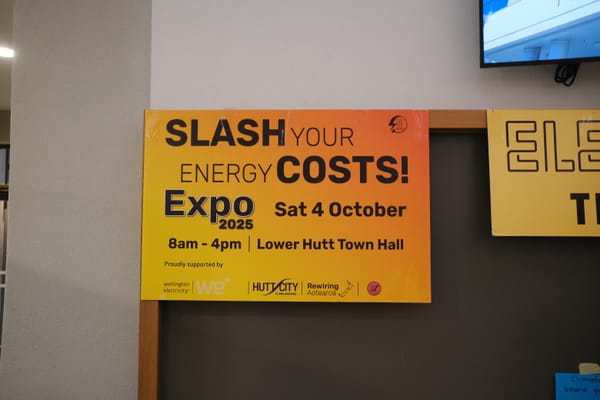The Coalition’s fantastic idea for offshore wind power

I have great news. The Coalition Government is unlocking a completely untapped renewable energy source that could provide huge amounts of clean power.
It looks very similar to what you’ll find atop Brooklyn or nestled in Mākara. It is offshore wind energy – a common way to make electricity in countries like the UK.
It wasn’t possible for wind turbines to be built offshore. That’s about to change. Thanks to a new law introduced to Parliament in December, inexpensive and renewable wind energy can be investigated and built off our coasts.
The regulation was consulted on by Labour, introduced by National, and has been supported by every party in Parliament so far.
This is awesome news. Offshore wind power is an exciting solution to climate change that’s affordable right now. Our gusty coasts could create bountiful power. Let’s explore its potential and why we should implement it fast.

How offshore wind works
Offshore wind turbines are the larger cousins of land-based wind. The turbines are placed at sea and when they catch the wind they generate electricity.
Because they’re built in water, there are different engineering challenges. The biggest challenge is the depth of the ocean. Turbines can be fixed to the sea floor in shallow waters. These are the most common and inexpensive offshore wind farms.
In deeper waters (where the sea floor is 70+ metres below), you can install floating turbines. I wish I was as clever as engineers to understand how these work. As far as I understand, they’re tethered to the sea with cables rather than being drilled into the ground. These are more expensive and harder to build. With time and effort, they could get more cheaper.
The technology is abundant, especially in Europe. As of 2023, the UK powered about a fifth of its electricity from offshore wind. They’re aiming to nearly quadruple their offshore wind capacity in the next five years. I’d argue that the UK was able to switch off its last coal power plant last year in no small part because offshore wind provided a low-pollution alternative.

Offshore opportunities for New Zealand
Allowing turbines at sea is particularly exciting because New Zealand has astounding amounts of wind energy blustering around our coasts.
We sit in a region called the “roaring 40s”: our position in the world gets super strong westerly winds. These air currents are what make Wellington so fucking windy. We can harness this energy to make a lot of clean power.
In theory, there’s over 200 times more energy available in offshore wind than we make with every power station in New Zealand right now. It’s hard to comprehend just how big an opportunity this is.
The vast majority of that energy sits in deep waters - meaning we’d need the expensive floating turbines to use it. For now, we can just focus on building the cheap turbines that work in shallow waters.
Even if we only use the cheap shallow water tech, we’d still be able to boost our electricity generation ten times over.
Having that much extra capacity means we won’t need fossil fuels in our electricity network. We’ll also be able to electrify more stuff that currently burns fossil fuels, like our cars and steel mills. With the right incentives, we could also rein in our rising power prices.
According to PwC, this unlocks some great short and long term boosts to our regions. Areas like Taranaki, which currently depend on oil and gas, are the perfect spot for offshore wind power. Workers in these regions have the perfect skills to build and operate turbines at sea. The construction will be a massive boom, and there will be smaller but sustained employment for workers to maintain turbines for nearly a century.
Offshore wind is estimated to create more jobs and a little more economic benefit than oil and gas. It is economically better for communities, while also reducing the warming of the world that’s causing regular freak storms and floods.
Environmentally, it’s a complex picture. Construction makes noise: something that deters sea mammals. Companies are currently studying how to reduce the sound pollution that comes with building. Once turbines are installed, they have an artificial reef effect that attracts fish to the area.
There’s no zero harm way to do this environmentally. Regardless, I think the trade off is worth it. Without more clean energy, the oceans will get warmer from burning fossil fuels. That’s indisputable.
Marine populations are already being displaced by a warming ocean. That will get worse the more petrol we burn. The local harm of turbines disrupting and changing existing environments are, to my mind, well worth it to avoid the devastating harms of an overheated ocean.
These kinds of projects deserve fast tracking.
Offshore wind could make it very easy for us to cut off our dependence to fossil fuels. If it doesn’t happen, it might be because, like housing, we have made it incredibly easy to deny new infrastructure.
Ending our use of fossil fuels requires a lot of good things to be built. There will be mistakes and trade offs along the way, but there is no way out of this mess without saying yes to new technology like offshore wind turbines.
We could easily fast track this energy. “Fast-tracking” doesn’t have to mean shameless approval of deep sea mining. It can mean living in a greener, cheaper, better future far sooner.
We need to make it so fucking easy to build stuff that we want: papakāinga, apartment buildings, parks, solar panels, city trees, bike lanes, and railways. Our local communities like Taranaki are demanding this approach. They want low carbon economies. The slower the transition, the easier it becomes to fall back to fossil fuels.
I agree with our wonderful local councillor Geordie Rogers: "For a very long time the progressive movement has sought ways to stop things from happening and we need to start enabling good things to happen.”
Offshore wind is awesome. I’m so glad this Government has made this power possible. Let’s build it, fast.





